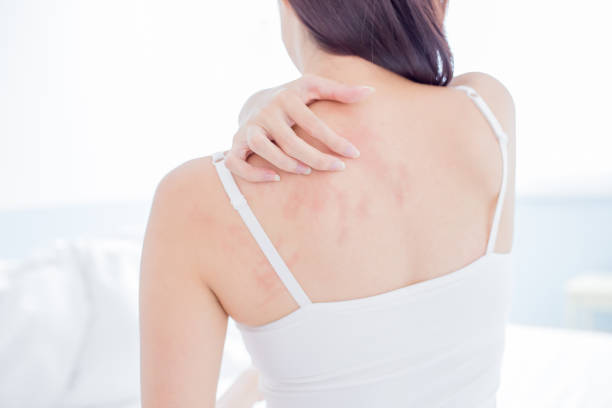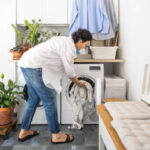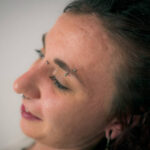Parvovirus, or “parvo”, is an infectious and sometimes deadly virus that affects both humans and animals alike. When it comes to human skin specifically, the question of how long parvo can live on the surface is an important one to consider in order to prevent transmission. In this blog post we will address what parvovirus is and where it comes from while also providing details about how long can parvo live on human skin before eventually becoming inactive. Additionally, we will cover various ways you can protect yourself if exposed to the virus as well as preventive steps all humans should take in order to reduce their risk of contracting parvovirus.
Contents
What is parvo?
Parvovirus is an extremely contagious virus that affects dogs, cats, and humans. It is classified as a DNA virus – meaning it contains genetic material and can replicate itself inside the cells of its host. The most common symptom of parvo in humans is severe abdominal pain, along with nausea, vomiting, and diarrhea. In animals such as dogs and cats, however, it can cause severe damage to the heart and intestines.
Does parvo stay on human skin?
The virus is highly contagious and can be transferred from person to person through direct contact with the skin. It is important to remember that even though the virus may become inactive, it may still be able to cause infection if not removed properly from the surface of the skin.
How long can parvo live on human skin?
So, how long can parvo live on human skin? Parvo can live on human skin for up to one hour before becoming inactive. During this time, the virus can be transferred through contact with another person or animal. It is important to note that this time frame may vary depending on environmental factors such as temperature and humidity.

What causes parvo on human skin?
Parvo can be transferred from person to person or from an animal to a person if contact is made with the skin. This could include touching, licking, or even sharing items that may have come into contact with the virus. Additionally, it is possible for parvo to be spread through contaminated surfaces such as door handles and furniture if not properly disinfected.
What are the symptoms of parvo in humans skin?
Symptoms of parvo in humans may include a rash or blisters on the skin that are usually itchy and red. The blisters may become filled with fluid or pus and cause discomfort. Other symptoms may include fever, chills, nausea, vomiting, and muscle aches. In rare cases, severe infection can cause a general feeling of weakness or fatigue.

What is the treatment for parvo on human skin?
Treatment for parvo on human skin usually consists of a topical cream or ointment that helps to reduce inflammation and discomfort. It may also include antibiotics to help fight any bacterial infection that has occurred as a result of the virus. In some cases, oral medications may be prescribed to help reduce fever and other symptoms associated with the virus.
How can you prevent parvo on skin?
– Wash your hands often with soap and water
– Avoid close contact with people who are ill, especially those showing signs of parvo
– Disinfect any surfaces that may come into contact with the virus
– Wear protective clothing when handling animals or their waste
– Vaccinate your pets against parvovirus as recommended by your veterinarian
– Keep your pet away from other animals that may be carriers of the virus
– Avoid contact with feces, saliva, and urine of infected animals

Conclusion: How long can parvo live on human skin?
Parvo can live on human skin for up to one hour before becoming inactive. It is important to take steps to prevent the spread of the virus, such as washing your hands often and disinfecting any surfaces that may come into contact with it. Additionally, vaccinate your pets against parvovirus as recommended by your veterinarian in order to reduce the risk of transmission between humans and animals. If you suspect that you may have come in contact with the virus, seek medical attention immediately.
FAQ: Parvo
Can I carry parvo on my clothes?
While Parvo is not airborne, it can easily be carried on various surfaces, including human skin. This means that after being exposed to the disease, it can be found on the ground, surfaces in kennels, hands, and even clothing.
How long will parvo live in a house?
Discover how long the deadly parvovirus can survive in your home and learn the key to effectively eliminate it. Indoors, the virus can persist for a minimum of one month, while outdoors, it can thrive for several months, and in optimal conditions, up to a year. However, worry not. We have the solution. Choose a trusted cleaner specifically proven to eradicate parvovirus. Keep your surroundings safe and protected by taking the necessary steps.
How do I make sure my house is parvo free?
Ensure your house is Parvo-free. Here’s the best household cleaner to combat the virus: bleach (1 part bleach to 30 parts water). Apply it on hard surfaces such as tiles, concrete, and even the bottom of shoes. Leave it on the surface for at least 10-15 minutes. Remember to wash anything that can be bleached. Keep your home safe and sanitized with these easy steps.
Can parvo survive the washing machine?
While parvovirus is a resilient virus, it cannot be easily deactivated in conventional washing machines, as boiling temperatures (212 degrees F) are required.
Does Dettol kill parvo?
Contrary to popular belief, disinfectants such as Dettol, Clorox, Lysol, Odoban, and Alcohol are not effective in eliminating parvo virus.
What is the incubation period of parvovirus in humans?
Discovering the incubation timeframe of parvovirus in humans: learn when infection is most contagious. The incubation period typically lasts from four to 14 days and early stages are the most infectious before symptoms arise.
Does showering get rid of parvo from human skin?
Showering can aid in minimizing the spread of parvovirus, but it isn’t a panacea. The virus is extremely infectious and can exist on surfaces for over a month. Therefore, relying on showering alone may not be adequate to fully remove the virus from your skin.
What temperature kills parvo virus?
To effectively eliminate the parvovirus, high heat is the key. However, it must reach a temperature of 120-130 degrees Celsius for at least 15 minutes. Additionally, sunlight can also deactivate the virus. Take the necessary precautions to ensure complete eradication of this dangerous virus.
Do you need to disinfect after parvo?
Disinfecting is crucial after a parvovirus infection. The virus can linger on surfaces and objects for several months, making it imperative to take necessary precautions for a virus-free home.
Does vinegar clean parvo?
Debunking popular myths: vinegar and essential oils not effective against parvovirus and new coronavirus disinfection. Despite being utilized by dog breeders for years, studies show no evidence that distilled vinegar or essential oils can disinfect parvovirus or the new coronavirus.
What herbal medicine is good for parvo?
Unleash the benefits of garlic as a natural antiviral and immune booster for dogs struggling with parvo. Reinforce your beloved pet’s immune system against the virus with this scientifically-recommended herbal solution. Spice up their diet with freshly-chopped garlic or opt for encapsulated cloves to maximize their recovery potential.

Trayce served as a grassroots leader and activist in Texas as President of Dallas and Texas Eagle Forum.
Trayce is Mom Caucus Member, Texas Conservative Mamas, Texas Conservative Grassroots Coalition Leader, and Grassroots America Champion of Freedom Honoree.
She currently serves as the Eagle Forum National Issues Chair on Human Trafficking.
Trayce received a Bachelor’s Degree in Marketing from Texas A&M
Currently, she homeschools her youngest child age 13 and graduated her six oldest children, ages 31 to 19.







